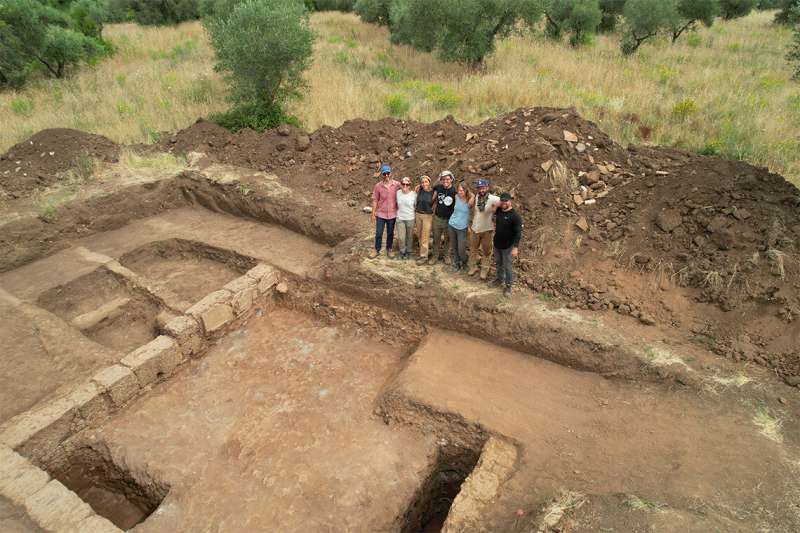From small coins to tiny pieces of ceramic and even clumps of soil, Seth Bernard and a group of graduate students from the University of Toronto are unearthing a story about how a Roman city founded in 241 BCE lived and breathed through time.
"What I want is the day-to-day, what it was like—the connections linking people in the countryside to people in the city," says Bernard, an associate professor in the Faculty of Arts & Science's department of classics. "And it's just that day-to-day experience we can start to reconstruct in a way we've never done before."
Bernard is part of an international team of scholars exploring "Falerii Novi," an ancient city located about 50 kilometers north of Rome.
As part of a five-year project, Bernard collaborates with colleagues from Harvard University and the British School at Rome. He also worked with a team from Ghent University in Belgium during the four-week season this past summer. The project works by concession of the Soprintendenza di archeologia per la provincial di Viterbo e l'Etruria Meridionale (the Superintendence of Archaeology for the province of Viterbo and southern Etruria).
Aside from portions of the city's original walls that still stand, the site is a scenic flat plain of agricultural fields and olive groves. But buried underneath is a fascinating history of a city founded more than 2,000 years ago that, at its height, was home to about 15,000 people.
About 35 scholars from different fields were focused on three separate dig sites. One site, overseen by the British School at Rome, focused on one of the city's main streets, which researchers believed included both homes and businesses.


 phys.org
phys.org
"What I want is the day-to-day, what it was like—the connections linking people in the countryside to people in the city," says Bernard, an associate professor in the Faculty of Arts & Science's department of classics. "And it's just that day-to-day experience we can start to reconstruct in a way we've never done before."
Bernard is part of an international team of scholars exploring "Falerii Novi," an ancient city located about 50 kilometers north of Rome.
As part of a five-year project, Bernard collaborates with colleagues from Harvard University and the British School at Rome. He also worked with a team from Ghent University in Belgium during the four-week season this past summer. The project works by concession of the Soprintendenza di archeologia per la provincial di Viterbo e l'Etruria Meridionale (the Superintendence of Archaeology for the province of Viterbo and southern Etruria).
Aside from portions of the city's original walls that still stand, the site is a scenic flat plain of agricultural fields and olive groves. But buried underneath is a fascinating history of a city founded more than 2,000 years ago that, at its height, was home to about 15,000 people.
About 35 scholars from different fields were focused on three separate dig sites. One site, overseen by the British School at Rome, focused on one of the city's main streets, which researchers believed included both homes and businesses.


Researchers piece together the story of an ancient Roman city, one artifact at a time
From small coins to tiny pieces of ceramic and even clumps of soil, Seth Bernard and a group of graduate students from the University of Toronto are unearthing a story about how a Roman city founded in 241 BCE lived and breathed through time.
